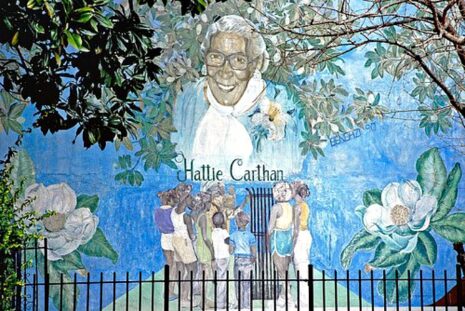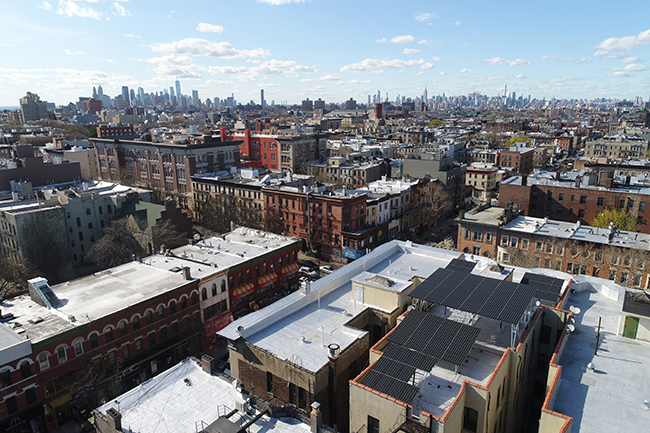 Did you know that trees can be designated as city landmarks? Only two have ever received landmark status, and of the two, only one is still in existence: Bed-Stuy’s Magnolia Grandiflora on Lafayette Avenue. These trees rarely survive so far north, but this one has been flourishing as a NYC resident since 1885.
Did you know that trees can be designated as city landmarks? Only two have ever received landmark status, and of the two, only one is still in existence: Bed-Stuy’s Magnolia Grandiflora on Lafayette Avenue. These trees rarely survive so far north, but this one has been flourishing as a NYC resident since 1885.
While it was a man named William Lemken who brought the seedling to Brooklyn and planted it in his front yard, it was Hattie Carthan, a Black community activist and environmentalist, who is single-handedly responsible for the Magnolia’s survival. A Bed-Stuy resident who was passionate about improving the quality of life in her neighborhood, she began replanting trees, thereby helping to found the Bedford-Stuyvesant Neighborhood Tree Corps and the Green Guerillas, a city-wide organization that was the force behind the community garden movement of the 1970s thanks to its now-famous seed bombs (fun fact: Solar One educators have made lots of seed bombs with students over the past 15 years). Carthan also started the Tree Corps in 1971 as a resource for young people to learn to care for trees and was the chairwoman of the Bedford-Stuyvesant Beautification Committee, which oversaw the planting of 1,500 new trees in Bed Stuy.
Known affectionately as “the tree lady,” Carthan adopted the magnolia tree as her own around 1953. When buildings behind the tree were set for demolition, she realized that a wall was needed to protect the historic tree, but it would cost $20,000 to build. To raise the money, she teamed up with local school children and the Beautification Committee on a project where kids sold paper magnolia leaves. The program was backed by the mayor’s office and raised $7,000. The Horticultural Society in New York matched the amount, and the wall was erected.
After succeeding in her landmark campaign, Carthan set her sights on three abandoned brownstones behind the tree, lobbying for them to be turned into a community environmental center. The homes are credited with keeping the tree alive for over a century, as they protected it from extreme heat and cold. Once again, her efforts paid off, and in 1990, six years after her passing, the Magnolia Tree Earth Center was born, not only preserving the historic houses, but creating a place for local residents of all ages to learn about gardening, conservation, and the natural environment.
You can read more about Hattie Carthan, her life and her legacy on Outdoors.org here.


